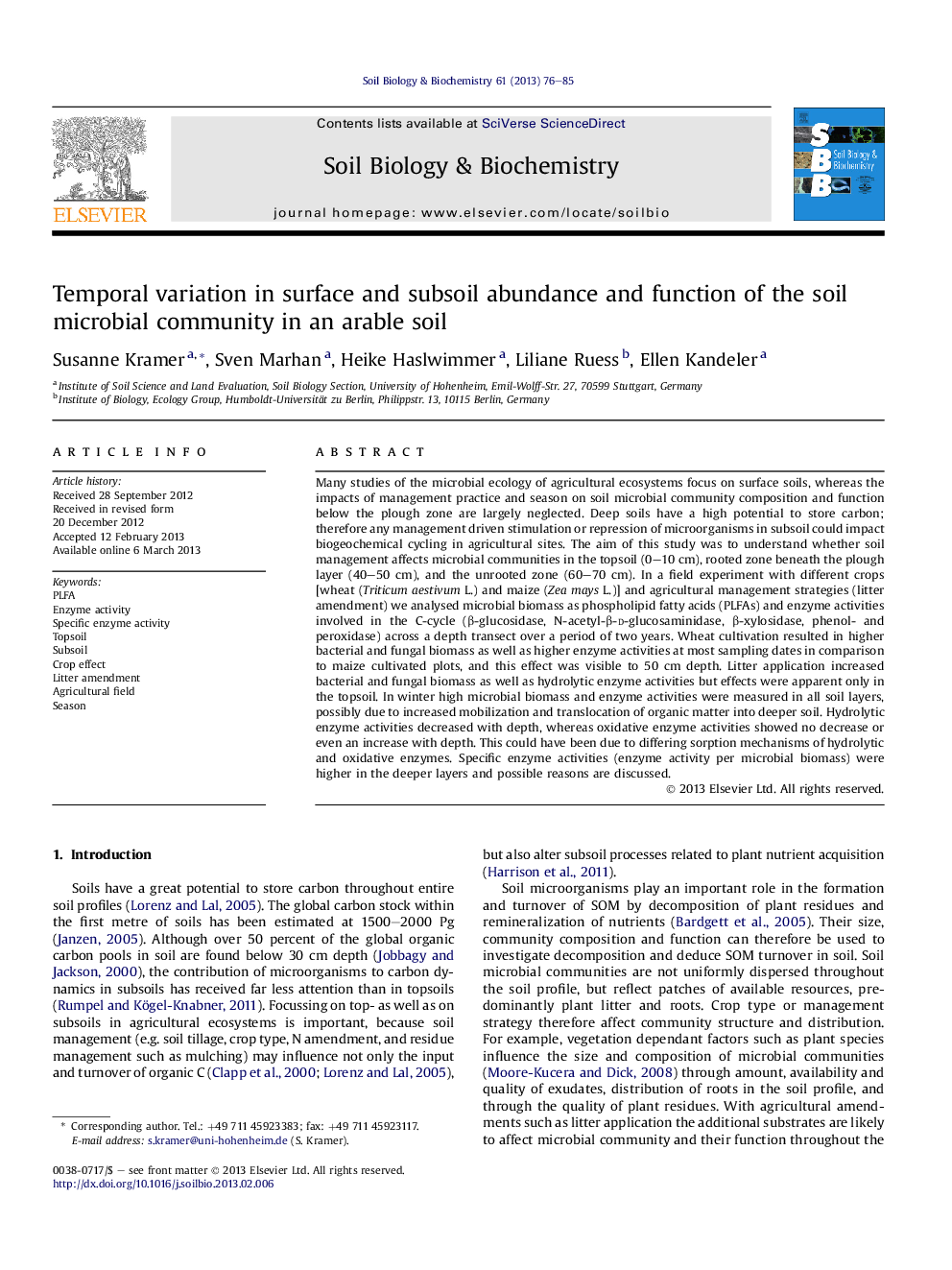| کد مقاله | کد نشریه | سال انتشار | مقاله انگلیسی | نسخه تمام متن |
|---|---|---|---|---|
| 2024792 | 1542623 | 2013 | 10 صفحه PDF | دانلود رایگان |

Many studies of the microbial ecology of agricultural ecosystems focus on surface soils, whereas the impacts of management practice and season on soil microbial community composition and function below the plough zone are largely neglected. Deep soils have a high potential to store carbon; therefore any management driven stimulation or repression of microorganisms in subsoil could impact biogeochemical cycling in agricultural sites. The aim of this study was to understand whether soil management affects microbial communities in the topsoil (0–10 cm), rooted zone beneath the plough layer (40–50 cm), and the unrooted zone (60–70 cm). In a field experiment with different crops [wheat (Triticum aestivum L.) and maize (Zea mays L.)] and agricultural management strategies (litter amendment) we analysed microbial biomass as phospholipid fatty acids (PLFAs) and enzyme activities involved in the C-cycle (β-glucosidase, N-acetyl-β-d-glucosaminidase, β-xylosidase, phenol- and peroxidase) across a depth transect over a period of two years. Wheat cultivation resulted in higher bacterial and fungal biomass as well as higher enzyme activities at most sampling dates in comparison to maize cultivated plots, and this effect was visible to 50 cm depth. Litter application increased bacterial and fungal biomass as well as hydrolytic enzyme activities but effects were apparent only in the topsoil. In winter high microbial biomass and enzyme activities were measured in all soil layers, possibly due to increased mobilization and translocation of organic matter into deeper soil. Hydrolytic enzyme activities decreased with depth, whereas oxidative enzyme activities showed no decrease or even an increase with depth. This could have been due to differing sorption mechanisms of hydrolytic and oxidative enzymes. Specific enzyme activities (enzyme activity per microbial biomass) were higher in the deeper layers and possible reasons are discussed.
► Crop type affects bacteria, fungi and enzyme activities down to a depth of 50 cm.
► Maize litter affects PLFAs and hydrolytic enzyme activities only in the topsoil.
► In winter, high substrate availability raises bacteria, fungi and enzyme activities.
► Varying sorption of enzyme classes result in a different depth distribution.
► Specific enzyme activities are higher in subsoil in comparison to topsoil.
Journal: Soil Biology and Biochemistry - Volume 61, June 2013, Pages 76–85